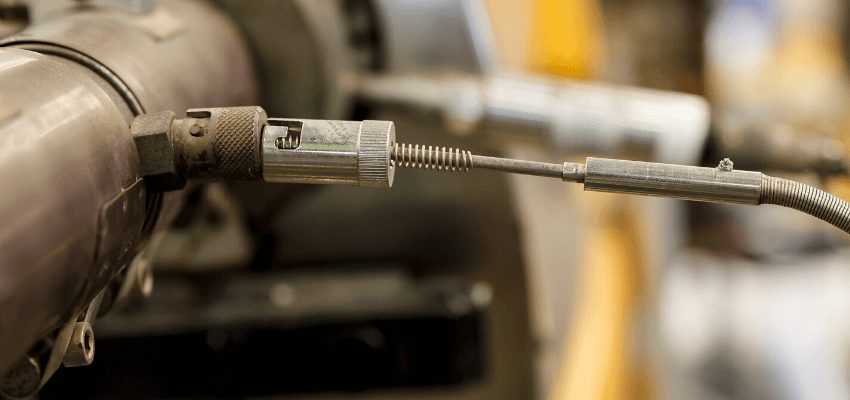
Not sure which temperature sensor is best for your needs?
Without the right knowledge, it can be a difficult choice to make. There are numerous options to choose from. And, whilst it’s impossible to say that one temperature sensor is better than another, they all have their own pros and cons – and, as such, are better suited to certain applications.
Here we explore these pros and cons in more detail and try to make your decision a little easier.
Thermocouples
Thermocouples are the most frequently employed type of temp sensor available.
Essentially, they consist of two wires. These wires are made from different metals and welded together at one end. Therefore, when they experience a change in temperature, a voltage is produced. This is known as the Seedbeck Effect and it’s used to determine the temperature.
Thermocouples can be created using a variety of metal combinations. Each combination is denoted by a different letter (T, J, E, K, S etc.) and the two most common include:
1. K type thermocouples
These are made from chromel and alumel. Capable of withstanding temperatures from 0°C to 1260°C, they’re highly recommended for checking the safety of heating appliances. They also demonstrate excellent resistance to oxidisation and are perfect for use in clean environments.
2. J type thermocouples
These are made from iron and constantan and, as a result, have a smaller temperature range (from 0°C – 816°C). They’re a popular option for vacuum applications and monitoring inert materials.
Unfortunately, thermocouples are non-linear, which means the reading will need to be converted using a lookup table. They’re also slightly less accurate than other temp sensor technologies.
But, it’s important to bear in mind, they do have several benefits that offset these disadvantages. For example – regardless of which ‘letter’ type you choose – they all have a fantastic response time. They cover a broad range of temperatures. And, what’s more, they’re very affordable.
Resistance Temperature Detectors (RTDs)
An RTD is another popular type of temperature sensor.
Typically, they’re made from a length of metal wire, which is wrapped around a ceramic or glass core and placed inside a sheathed probe. If the temperature changes, the resistance of the metal wire changes too – and this fluctuation can be used to accurately measure the temperature.
Various metals can be used to create an RTD (each one offering a different range), including:
- Platinum: -200°C to 600°C
- Copper: -190°C to 150°C
- Nickel: -60°C to 180°C
- Tungsten: -100°C to 1400°C
These all offer greater accuracy than a thermocouple. However, for high precision applications, platinum RTDs are usually recommended. The two most well-known include PT100 (with a resistance of 100Ω at 0°C) and PT1000 (with a resistance of 1000Ω at 0°C). These provide a near-linear response to temperature changes and their readings are highly accurate (within 0.1 to 1°C).
RTDs are also much more stable in measurement, compared to thermocouple temp sensors, and can be used to create repeat responses. However, they have a longer response time and can be more expensive – therefore, this is something to bear in mind when making your final decision.
Contact Cartridge Heaters today
Choosing the right temperature sensor for your needs can be tricky. Essentially, it comes down to the temperature range you wish to monitor and the level of accuracy that you require. But if you would like tailored advice on the best type for you, you’re always welcome to get in touch.
Our team of experts have excellent knowledge of the different types available – including their main pros, cons and uses. Simply give us a call on 0121 439 8932 to discuss your requirements in detail. Or, send an email to sales@cartridgeheaters.co.uk, and we’ll respond to your enquiry as soon as we can. For a more in-depth view of thermocouples visit here.
